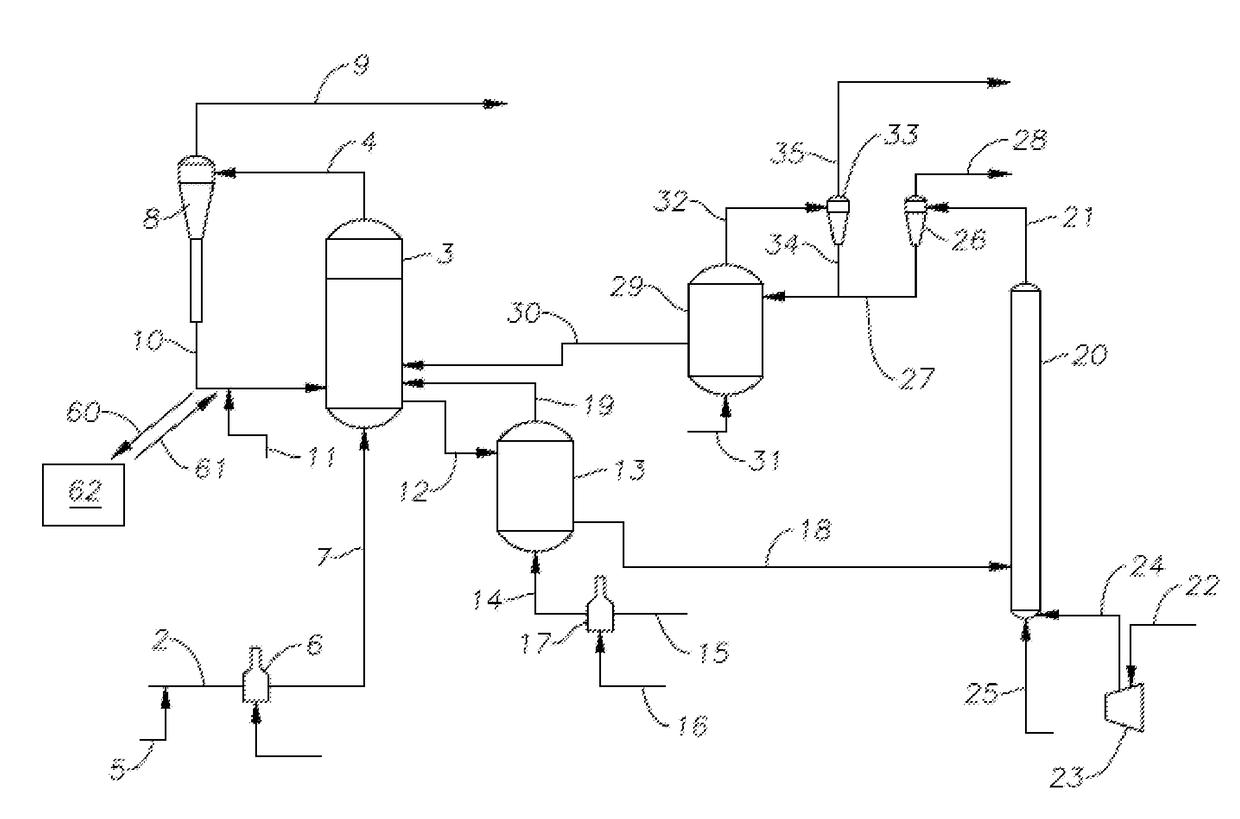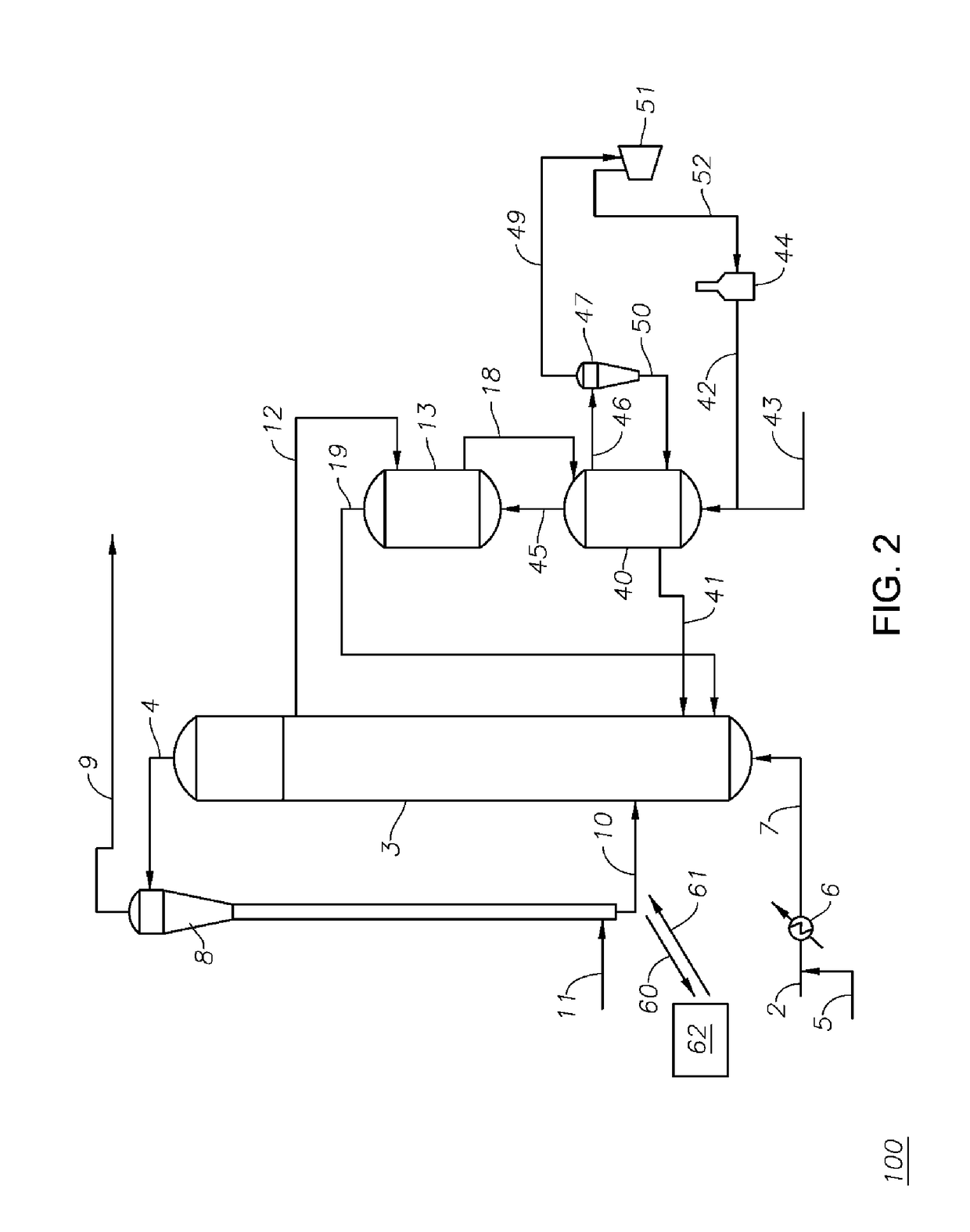Processes and Systems for the Conversion of Acyclic Hydrocarbons
a technology of acyclic hydrocarbons and reactor systems, which is applied in the direction of carboxylic compound preparation, hydrocarbon preparation catalysts, organic chemistry, etc., can solve the problems of low cpd, high cost due to supply limitations, and inability to perform cyclization
- Summary
- Abstract
- Description
- Claims
- Application Information
AI Technical Summary
Benefits of technology
Problems solved by technology
Method used
Image
Examples
example 1
Reactor with Bimodal Catalyst Particles and Inert Particles
[0187]Reactor modeling in Example 1 was performed using Invensys Systems Inc. PRO / II 9.3.4 for the purpose of estimating reactor feed and product stream conditions and properties. Depending on specifics of the modeling, variation in results will occur but the models will still demonstrate the relative benefits of the present invention. Numerous modifications and variations are possible and it is to be understood that within the scope of the claims, the invention may be practiced otherwise than as specifically described herein.
[0188]The objective of Example 1 is to determine the relative difference in particle size and / or density necessary to impart different fluidization behavior for SiC inert particles and catalyst particles (e.g., spray-dried, formulated zeolite catalyst) in a fluidized bed reactor for producing cyclopentadiene (CPD) from pentane. Specifically, it is intended for the SiC inert particles to be in a bubbling...
PUM
| Property | Measurement | Unit |
|---|---|---|
| temperature | aaaaa | aaaaa |
| temperature | aaaaa | aaaaa |
| temperature | aaaaa | aaaaa |
Abstract
Description
Claims
Application Information
 Login to View More
Login to View More - R&D
- Intellectual Property
- Life Sciences
- Materials
- Tech Scout
- Unparalleled Data Quality
- Higher Quality Content
- 60% Fewer Hallucinations
Browse by: Latest US Patents, China's latest patents, Technical Efficacy Thesaurus, Application Domain, Technology Topic, Popular Technical Reports.
© 2025 PatSnap. All rights reserved.Legal|Privacy policy|Modern Slavery Act Transparency Statement|Sitemap|About US| Contact US: help@patsnap.com



